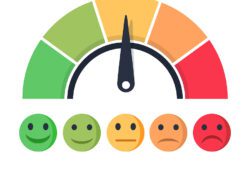The concept of a leap year emerges as a critical adjustment, ensuring the synchronization of our calendar with Earth’s orbit around the sun. This additional day, added to the calendar every four years on February 29, serves a purpose far beyond merely giving us one extra day. It is a testament to human ingenuity in aligning our constructed sense of time with the celestial dance of planets.
What is the purpose of leap year?
At its core, the purpose of a leap year is to correct the discrepancy between the calendar year and the astronomical year. While our standard calendar year lasts 365 days, the Earth actually takes approximately 365.2425 days to complete its orbit around the sun. This slight difference, if left unadjusted, would cause our calendar to drift away from the solar year, leading to significant seasonal shifts over time. By adding an extra day every four years, we realign our calendar with the Earth’s position in its orbit, maintaining the consistency of seasons year after year.
Who Invented the Leap Year?
The leap year, that extra day appearing in February every four years, has a history that dates back thousands of years. Although its origin cannot be attributed to a single person, the idea has evolved over time to adjust to astronomical precision.
- Ancient Egypt: The Egyptians, around the year 4236 B.C., were the first to implement a system with a leap year of 365 days and 1/4. Their calendar was based on the heliacal rising of Sirius, a star that marked the beginning of the agricultural year.
- Julian Calendar: Julius Caesar, in the year 46 B.C., introduced the leap year in the Roman calendar. Influenced by the Egyptian system, a year of 365 days was established with an additional day every four years. This calendar, known as the Julian calendar, spread throughout much of the Roman Empire.
- Gregorian Calendar: Over time, it was evidenced that the Julian calendar accumulated a small calculation error. To correct it, Pope Gregory XIII in 1582 promulgated the Gregorian calendar, which we use today. In this system, leap years are eliminated in centuries that are not divisible by 400.
Why is it called a leap year?
The term “leap year” itself reflects the way dates “leap” over one day in the week sequence every four years. In a common year, the day of the week advances by one day from one year to the next; for example, if January 1 is on a Monday in one year, it will be on a Tuesday the next year. However, in a leap year, this progression “leaps” over a day, moving from Monday directly to Wednesday. This linguistic representation captures the essence of the leap year’s role in enabling our calendar to jump forward in time, keeping pace with the Earth’s journey around the sun.
ALSO. Sora OpenAI. Another 5 Things You Can Do with This Artificial Intelligence
How Many Days Does a Leap Year Have?
It has 366 days, one more than a common year. The days are distributed as follows:
- 31 days: January, March, May, July, August, October, and December.
- 30 days: April, June, September, and November.
- 29 days: February.
When Is the Next Leap Year?
The next leap year is 2028. Below is a list of the upcoming leap years:
- 2028
- 2032
- 2036
- 2040
- 2044
Leap years are an important part of the Gregorian calendar, which is the most used calendar in the world. These years are interspersed every four years to compensate for the difference between the solar year and the civil year.










